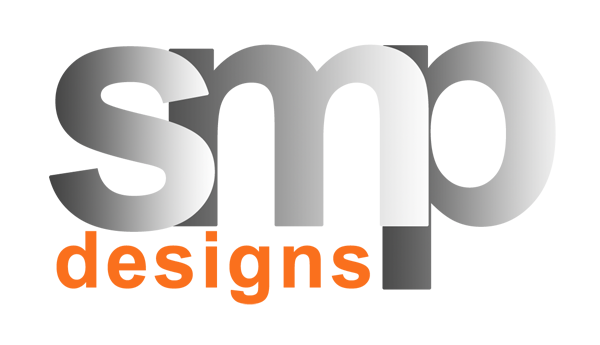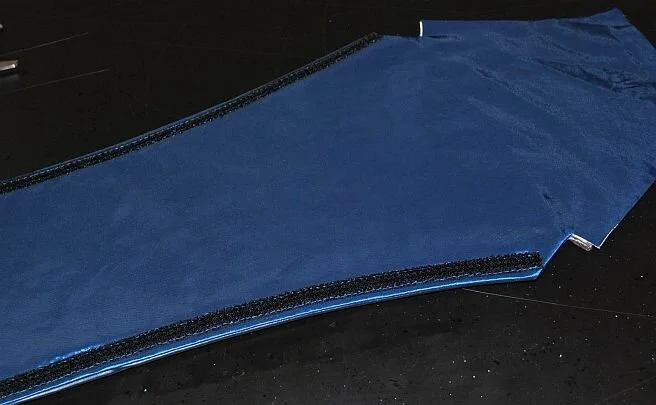Captain Marvel
This article will cover the creation of a replica of Carol Danvers' Captain Marvel costume from the 2019 film. I decided to begin this project with the torso and then move on to the shirt/sleeves, pants, and accessories.
So, let's jump right in on the torso. Like many MCU costumes, Captain Marvel is constructed in several pieces. The main part of the upper body is a vest with a clever closure system in the back. This vest fits over an undershirt and sleeves. Once the measurements and proportions were confirmed with the client, I set out to begin the pattern. Here are a few of the many reference images I used for the torso.
Fortunately, I happened to have a form the same size as the client, and I could use it to create a base by wrapping the form in plastic wrap and then masking tape. Once I had the form covered as much as needed, I began mapping out the various seam lines required to create the basic shapes.
Note that, at this point, I'm only working out the lines needed to make the shapes for the mock-up. Once the mock-up is fitted and adjusted, I'll add all the little detail seams - like the rounded seams on the sides and all the back details.
The tape base was removed from the form, cut apart and transferred to Swedish tracing paper.
I then cut out all the pieces and built a mock up of the vest out of some leftover Cordura I had in the studio.
With the vest mock-up complete, I needed to mock up the shirt to send to the client. I began by using a long sleeve t-shirt that she marked up for proportion and sent to me. I cut it apart and used it as a foundation for the shirt patterns.
The shirt section that needed the most pattern work was the sleeves. I drafted basic sleeve patterns from the t-shirt, but I needed them to have some shape.
So, I took the straight sleeve patterns, slashed them at the elbow, and redrew them with a curve (similar to a tailored jacket pattern).
I then assembled the shirt mock up and tested it with the vest.
The last piece I wanted to add to the mock-up was a test template for the shoulder armor. I traced the basic shape to fit the shoulder and cut it out of 2mm craft foam. I heated it and formed it over a shoulder buck to fit on the mock-up.
A simple pant mock-up followed, and all the pieces were sent to the client for the fitting.
Once I had the pictures from the fitting and notes from the client (all fit very well except for some alterations in the sides of the vest and the rise of the pants), I could get started on the final patterns.
I first needed to create templates from the final patterns for my partner, Jordan (of Jordan's Ironic Armory), who will make the cast rubber detail pieces.
I sketched all the templates on craft paper and sent him the drawings. He then scanned them, cleaned them up and created 3d models.
The pieces were then printed and prepped for molds.
In the meantime, I got to work on the soft parts of the costume. I began with the vest. Working back to front, I started by creating the 'back plate' that will cover the zipper. This piece, and most of the other main parts of the costume, was created with a muslin base. The shell was then cut in segments of blue faux leather and these segments were layered onto the base.
The red faux leather is en route and the upper section will be added when it arrives. this section will be finished and with a navy blue lining and will velcro to the back of the vest.
I then moved on to the vest sides. I needed to take the base pattern from the mock up and create the detail seams around the ribs and on the side front. I approached this section working top to bottom, each section was cut, edged and placed on a muslin base.
Here are the sides and back pinned together. Next I'll be working up the base for the chest and the shirt.
The rest of the materials for the suit came in while I was traveling, so I could jump right back in when I returned.
I started by adding red to the back panel. The primary red I'm using is medium-weight faux leather. For the primary segments, the red material is backed with headliner foam to create the dimension needed and support the rubber pieces that will be glued over them.
On the back, the red segment was cut, backed with headliner foam and the detail lines stitched in. The piece was lined up to the base and tacked down with Super 77.
The next step was to add the lining. The lining for this piece was cut from navy blue taffeta, and thin velcro strips were added. It was then sewn down and turned right side out. Note that the upper red section was not sewn at this point. This is because it will be edged with gold in the next step.
The gold edging was then added to the sides of the red section, and the upper 'collar' section was added. I used brass snaps to both functionally attach the collar at the top and serve as the gold details on the back of the collar. The edge between the blue and red will be covered with a cast rubber piece at the end.
I then moved on to building out the base for the chest piece. To do this, I cut the mock-up patterns out of 2mm craft foam and glued them to headliner foam. The pieces were all cut out and assembled with contact cement.
The next step was to create the center grey strip that extends into the collar and the upper red segments. The center strip was made of medium-weight Cordura that was detailed and glued to the base. The red segments were created in a similar fashion to the upper back. They were then detailed and tacked to the base with Super77. The front edges were then sewn through all layers to secure the pieces permanently.
The blue lower section was next. The shell for this section was made using blue metallic faux leather backed with muslin. This piece was then sprayed with Super77 and smoothed over the foam base.
The join between the red and blue will be cleaned up, and that area and the underbust/outer lower edges will be covered with the cast rubber pieces.
At this point, I needed to move on to the shirt and begin with the shoulders. The base for the shoulder armor pieces was made out of red faux leather backed with headliner. These pieces were then attached to red Ponte pieces that will form the sleeve's upper shoulder/raglan portion.
The outer sleeve stripes were next. The outer sleeves were made of primary navy blue faux leather. To make the stripes, I cut a strip of blue based on my pattern and added gold edging. This was trimmed for the .25" gold stripe and the .5" seam allowance. The entire piece was then mounted to the headliner foam. I added the foam to this section of the sleeve to ensure that any area with a rubber piece glued to it is fully supported.
Muslin bases were cut for the outer sleeves, the stripes attached to them, and the rest of the outer sleeve pieces were finished with navy faux leather.
The undersleeves were made of metallic blue accent material with a strip of stretch added to the back for added mobility. For the elbow sections, I cut strips of the stretch material and ran lines of pin tucks along them to create the 'ribs'.
The sleeves were then assembled, and the shoulders were added. Next, the shirt's body was made in navy stretch, and the sleeves were attached. The shirt will be hemmed, a minor finishing will be added to the neckline, and the temporary zipper will be replaced.
Here are all of the pieces at this point pinned together on the form.
Meanwhile, as I've been working on the suit, Jordan has been hard at work on all the cast pieces.
To give an example of how close he got to my original paper templates, here's one of the finished pieces with the paper template up against it.
I also wanted to highlight the shoulder pieces. These pieces were printed, molded and cast flat. Then, the rubber casts were pulled early and molded over a form to create the curve. When the rubber finished curing, the piece held its shape. We went with this method to control the thickness of the pieces and simplify the molding/casting process. That would not have been possible had he modeled and printed curved pieces.
Several pieces needed to be gold, red, and blue. All of the pieces were cast with gold powder, and the red and blue segments were painted for the closest match to the fabrics. Airbrushing and distressing/weathering smooths out any minor inconsistencies at the end.
While waiting for the cast pieces to arrive, I got started on the pants. I made a general pants pattern and then attacked them front to back. I decided to make all the details on the front of the legs like a giant patch that would then attach to the base muslin 'lining'.
Once the front panels were complete, they were attached to the base, and the rest of the pants were built out.
Below are one side of the pants complete and the finished pants on the form.
I then got started on the accessories - gauntlets, greaves, belt and pods. These pieces were created by layering 2mm EVA foam segments on top of headliner foam foundations.
The layered pieces were then covered with red faux leather, and details were stitched to keep the edges crisp.
When these pieces were assembled, I had the cast pieces in hand and set to test fitting and weathering them.
I used a black wash over all the pieces to accent the great details Jordan achieved and then dry brushed over the gold with high-lustre paint to match the gold fabric details but still create some 'low-lights' and distress on the pieces.
The next step was to finish off the top of the vest with the shoulders and collar, and then I airbrushed the pieces to give the whole costume some depth and detail.
Finally, all of the gold pieces were added and the costume was finished and ready to ship.
And the costume debuted on the red carpet at the Captain Marvel premiere in LA on 4th March 2019 - where my client met and got photos with Brie Larson!
And, this is possibly one of my proudest moments as a maker.





































































